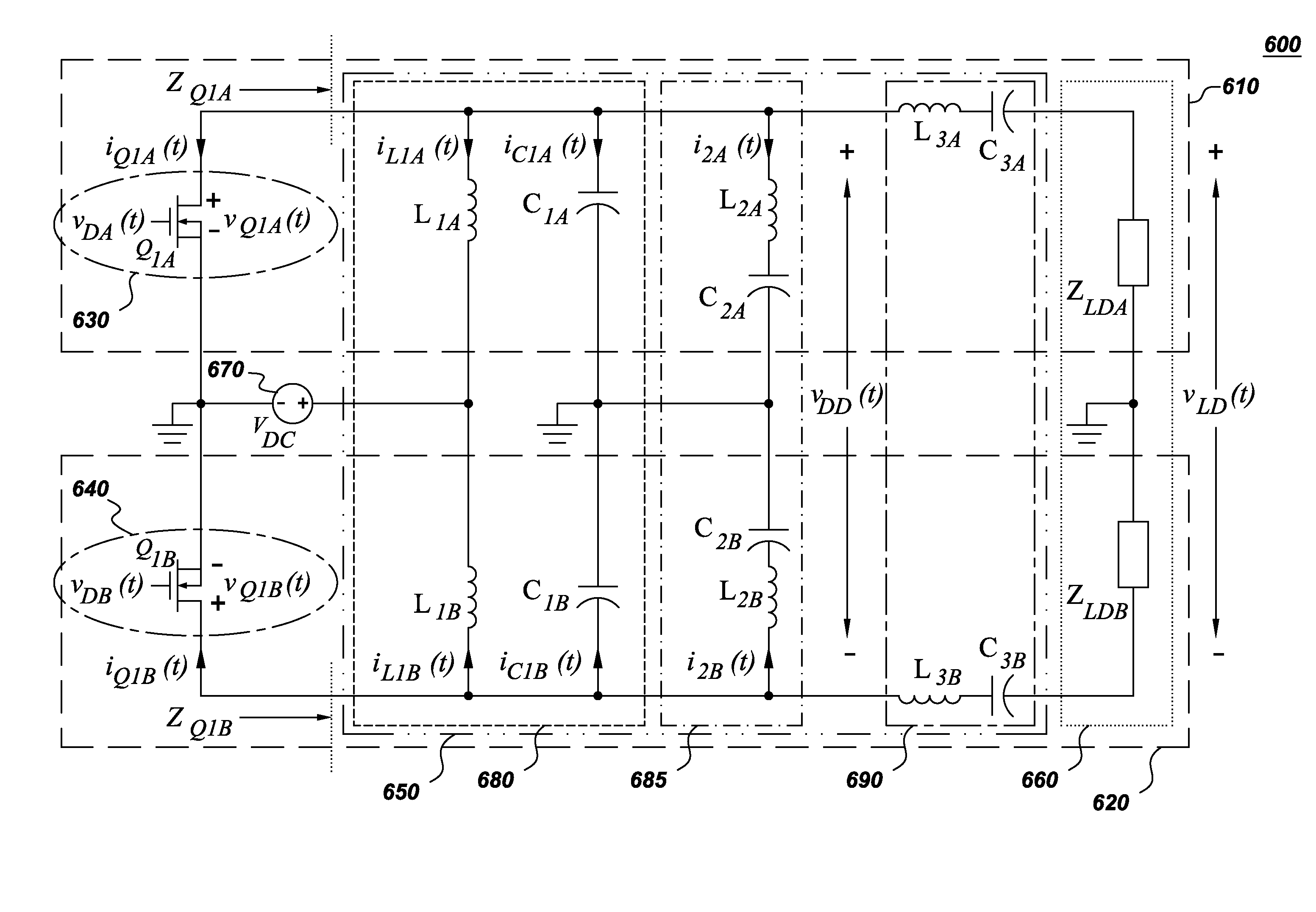Switching inverters and converters for power conversion
- Summary
- Abstract
- Description
- Claims
- Application Information
AI Technical Summary
Benefits of technology
Problems solved by technology
Method used
Image
Examples
Embodiment Construction
[0043]One embodiment provides circuits and techniques useful for switching inverter operation employing a tuned resonant network that operates at radio frequencies and which alleviates many of the deficiencies of the conventional designs. It is especially useful when operation at radio frequencies is desirable or necessary based on the particular application.
[0044]In one example, the circuit is developed by extending single-transistor class EF2 inverters into a push-pull circuit with a coupling that provides for independently tuning the harmonics of each section. In one aspect the circuit decouples the tuning of even and odd harmonics of the switching waveform, thus providing additional flexibility in the circuit design. Various embodiments provide for a reduction in the number and size of components, DC flux cancellation in magnetic cores, and a doubling of the ripple frequency.
[0045]A further embodiment of the present inverter is based on the class (converter that is herein classi...
PUM
 Login to View More
Login to View More Abstract
Description
Claims
Application Information
 Login to View More
Login to View More - R&D
- Intellectual Property
- Life Sciences
- Materials
- Tech Scout
- Unparalleled Data Quality
- Higher Quality Content
- 60% Fewer Hallucinations
Browse by: Latest US Patents, China's latest patents, Technical Efficacy Thesaurus, Application Domain, Technology Topic, Popular Technical Reports.
© 2025 PatSnap. All rights reserved.Legal|Privacy policy|Modern Slavery Act Transparency Statement|Sitemap|About US| Contact US: help@patsnap.com



